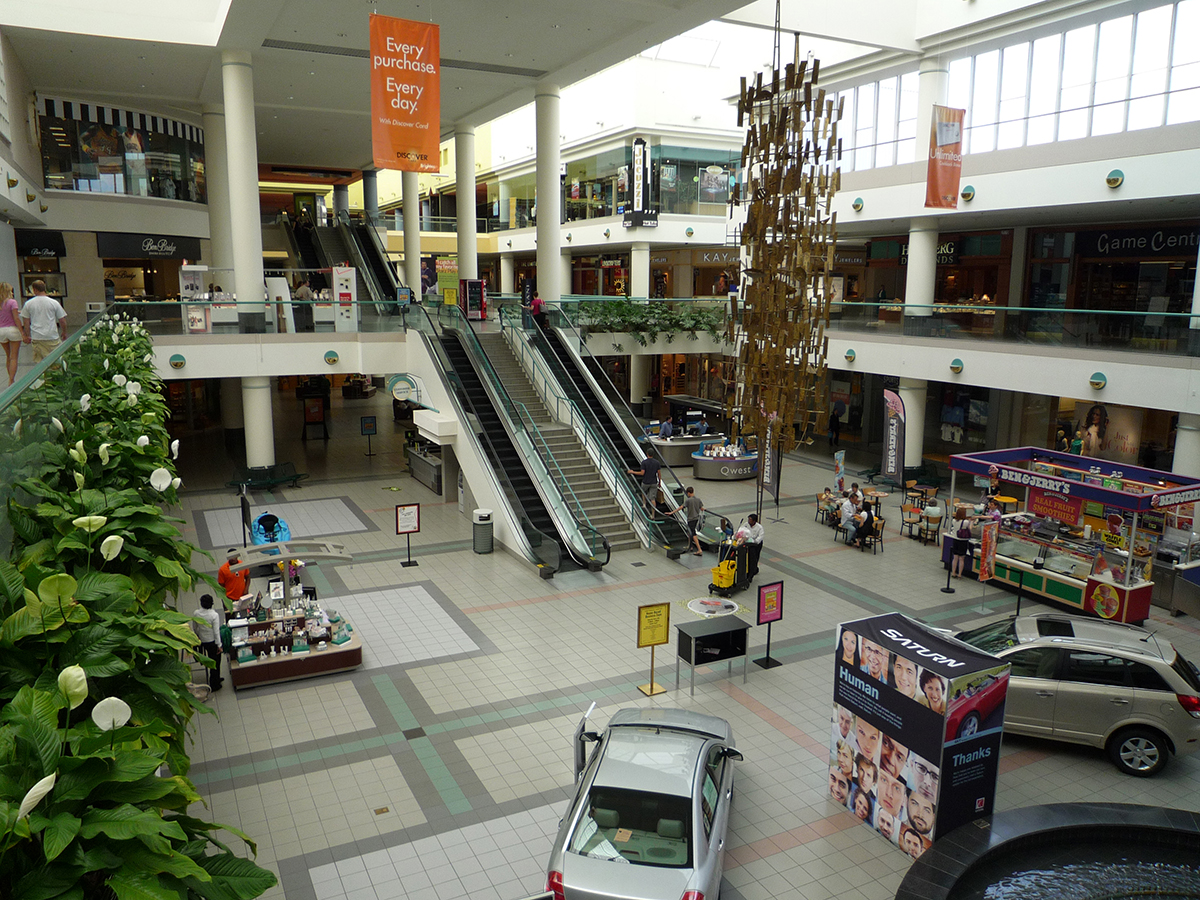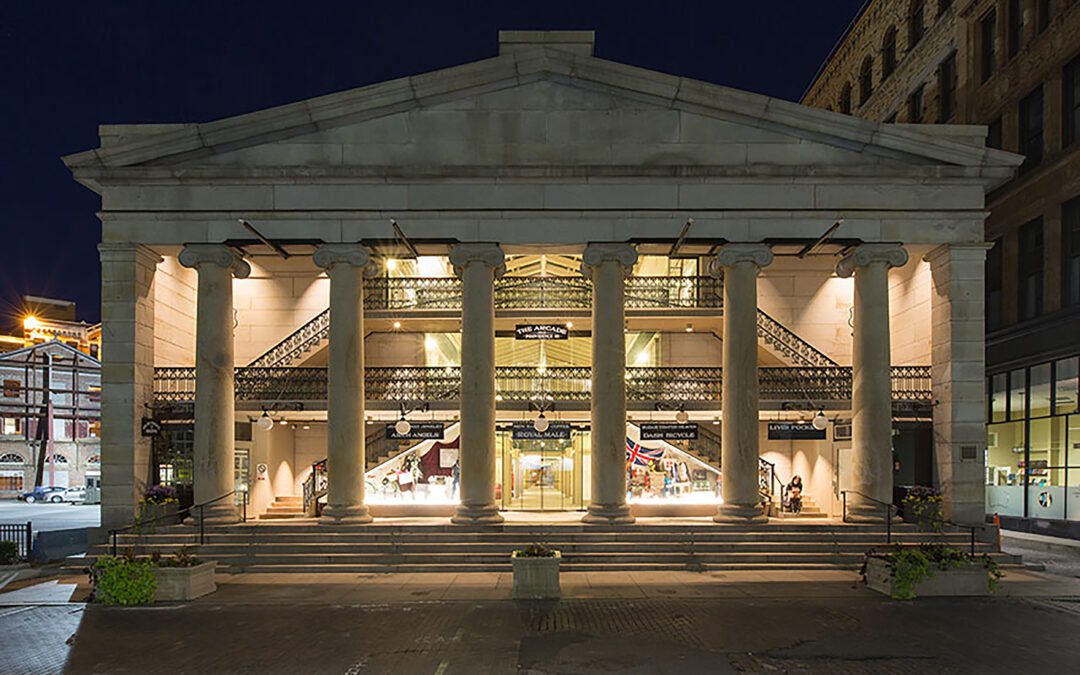For much of the twentieth century the shopping mall was the embodiment of American consumerism, a bastion of capitalism, and an icon of Consumer Economy. But as we approach the second decade of the 21st century, it’s clear that the heyday of the shopping mall has come and gone. So how did we get here? What led to the rise and fall of these mammoth structures that once dominated the American landscape?
The first enclosed shopping mall in the United States was the Westminster Arcade, constructed in Providence, RI in 1828. Modeled on the upscale urban centers of London like the Burlington Arcade, which was built in 1819, the idea of bringing many shops together in a new building was nevertheless a novel concept in America at that date.

Burlington Arcade in London, England
In the United States this idea of grouped shops really only exploded following the completion of the Second World War. Returning GIs used the newly constructed highway system to flee the densely packed and deteriorating cities to settle in newly constructed communities that were springing up all around the country. “Strip Centers” and “Shopping Malls” grew up alongside these new communities to provide a way for this growing demographic to meet their purchasing needs without having to travel to the nearby cities.
An early example of this type of development is the Southdale Center in Edina, Minnesota, which opened its doors in 1956. At the time of its construction, it was a revolutionary concept: a collection of stores under one roof with climate control, ample parking, and a centralized location. It was the perfect solution to the postwar suburban sprawl, a way to bring people together in a common space to shop, dine, and socialize, creating a sort of “Town Center” for communities that were too new to have one.

Southdale Center in Edina, Minnesota
For the next few decades, shopping malls proliferated across the country. They became more than just a place to buy things – they were a destination, a hub of activity. Teenagers flocked to the mall to hang out with their friends, families spent entire days shopping and eating, and communities gathered for holiday events and cultural celebrations.
Similarly, even historic communities like Newport, Rhode Island (which had long had stores and taverns mixed into its residential neighborhoods) felt that they needed to create their own shopping mall, and so the Shops at Long Wharf were constructed following the “urban clearance” of the old Water Works buildings, which the planners of the time felt were outdated.
But as the 20th century drew to a close, cracks began to appear in the foundation of the shopping mall. The rise of e-commerce, led by companies like Amazon, chipped away at their supremacy. People began to wonder ”Why leave your house to go to the mall when you can order anything you want online and have it delivered to your doorstep?” And with the advent of smartphones, people were able to browse and compare prices from a nearly infinite variety of suppliers, and to purchase products from anywhere, at any time.
It wasn’t just eCommerce that spelled the end of the shopping mall. Changing demographics played a role as well. As younger generations began to prioritize experiences over material possessions, they found less value in spending hours at the mall. Furthermore, as urban centers began to experience a resurgence in popularity, with younger people returning to the very downtown areas that their grandparents had fled, the suburban shopping malls began to lose their luster and profitability.
And then there’s the matter of the Great Recession, which hit in 2008 and sent shockwaves through the retail industry. As consumers tightened their belts and cut back on discretionary spending, many retailers that had anchored shopping malls for years went bankrupt, leaving behind empty storefronts and deserted centers. This made the malls, now more than fifty years old in many instances, look and feel even older and less desirable for shoppers and tenants alike.
Many shopping malls across the country have closed their doors for good, while others struggle to attract customers and remain relevant in an increasingly digital age. But there are glimmers of hope as some malls have reinvented themselves as mixed-use “Life Style” redevelopments, incorporating apartments, offices, and entertainment venues to draw in new populations. Others have focused on offering unique experiences that can’t be found online, such as artisanal food halls, pop-up shops, and immersive art installations. The upper two levels of the Arcade in Providence were recently converted to micro apartments by the Newport Collaborative in a successful adaptive reuse of the building. All the units sold quickly when they were put up for sale.

Westminster Arcade in Providence, Rhode Island
In the end, the rise and fall of shopping malls in the United States is a story of changing times and shifting priorities. It’s a reminder that nothing lasts forever, and that even the most iconic symbols of our culture are subject to the whims of the marketplace. But it is also a testament to the resilience of human ingenuity and creativity, as people seek out new ways to connect and engage with the world around us.
A4 Architecture renovated the Shops at Long Wharf in 2006 and the adjacent structure in 2017 to return them to the historic vernacular of the area and to make them more attractive to tourists and residents alike. Now changes are being proposed to make them even better suited to a community that prides itself on its traditional architectural character and authentic historic heritage. Stay tuned!
Ross Cann, RA, AIA, LEED AP, is an author, historian, and practicing architect living and working in Newport, RI. He holds degrees with honor in Architecture from Yale, Cambridge, and Columbia Universities.
At A4 Architecture + Planning we are expert at integrating advanced retail principles into our urban and building designs to provide more successful solutions for our clients. If you are interested in learning more about what we can do for you, please reach out to us!
